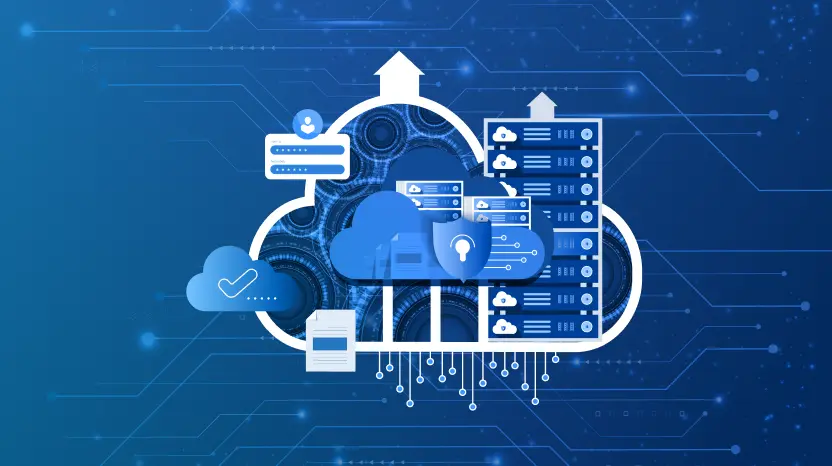Data Migration: How It Works and What You Need to Know
Every organization reaches a point where existing systems cannot keep up with the demands of modern business. Perhaps the infrastructure is too old, the storage is too costly, or a merger has left information spread across several platforms.
At this stage, leaders consider data migration, the process of moving information from one system to another. It may sound simple on the surface, like moving files from one folder to another, but the reality is far more complex. Data has context, permissions, compliance requirements, and links with other applications. The world will hold about 394 zettabytes of data by 2028, so the volume alone makes planning non-negotiable
A well-planned migration creates new opportunities: Faster analytics, streamlined collaboration, and improved governance. That’s why understanding how the data migration process works, its challenges, and the best practices to mitigate risks is essential before beginning.
Let’s jump in and learn:
- TL;DR: How Data Migration Works & What to Know
- What Is Data Migration?
- Types of Data Migration
- Data Migration Challenges and Risks
- Planning a Data Migration
- Data Migration vs. Data Conversion vs. Data Integration
- Data Migration and the Cloud
- Data Migration Results for the Effort
- Data Migration Tools and Approaches
- Frequently Asked Questions:
TL;DR: How Data Migration Works & What to Know
- Data migration involves planning, restructuring, and governance.
- Each data migration process (storage, database, application, cloud) has unique risks.
- Early discovery, testing, and a clear data backup strategy reduce risks.
- Choose the right approach (phased or all-at-once) to balance speed and downtime.
- After migration, validate results and enforce policies like what is data retention.
What Is Data Migration?
Data migration is the movement of data between systems while formats, storage, databases, or applications might change. It’s a core step in any implementation, consolidation, upgrade, or digital data management, and it must protect integrity, security, and continuity.
Types of Data Migration
- Storage migration: Arrays or object stores change to optimize data storage for business performance and cost.
- Database migration: Engines or schemas shift (for example, Oracle to Postgres).
- Application migration: Data moves with an app change (for example, legacy DAM to modern platform).
- Cloud migration: To SaaS or cloud IaaS/PaaS; may include hybrid designs.
- Consolidation/M&A migration: Combine sources to a single governed platform for cleaner digital data management.
Data Migration Challenges and Risks
Common data migration challenges are unknown sources, dirty data, oversized files, broken permissions, and tight windows. Some risks include compliance exposure, loss of metadata, business disruption, and budget overrun.
Track data migration challenges in a simple risk log and review it in stand-ups. Tackle data migration risks and mitigation with testing, staging, and a clear rollback.
Planning a Data Migration
Knowing what data retention is, is the first step of overcoming data migration challenges. Once you do, follow the below steps:
Determine the Size and Scope of the Data Migration Project
Quantify sources, volumes, file types, and permissions. Rehearsals surface hidden data migration challenges before go-live. Decide RTO/RPO, freeze windows, and success metrics. Document out-of-scope items to avoid creep.
Data Analysis and Preparation
Profile quality; dedupe and tag sensitive data. Archive what you don’t need but must be kept for a specific period in long-term, cost-effective storage, according to the guidelines of a data retention policy. Plan your data backup strategy before the first byte moves.
Define Architecture and Design Requirements
Pick the landing zone (cloud or hybrid), identity model, and permission strategy. Align with data storage for business needs (latency, cost, or geography).
Execute the Data Migration Plan
Pilot first. Use parallel trickle transfers when downtime must be near-zero; use big bang only when safe. Keep users informed; stagger cutovers.
Migration Follow-Up and Validation
Reconcile counts/checksums, re-permission sensitive areas, and run UAT on real tasks. Capture issues and fix them fast. Prioritize data migration challenges by impact and owner.
Follow-Up and Maintenance of the Plan
For 2-4 weeks, monitor performance, access, and errors. Enforce retention and backups.
Data Migration vs. Data Conversion vs. Data Integration
Data Migration vs. Data Conversion
Conversion is one task inside the data migration process, where you change the structure or format so the target can read it. You still need mapping, testing, and validation.
Data Migration vs. Data Integration
Integration links systems for steady-state operations. You may integrate after a move so apps stay in sync. Classify content, and use what are virtual data rooms for external sharing.
Data Migration and the Cloud
Moving data to the cloud means you need to choose regions, set up SSO and MFA, and decide who manages the encryption keys.
Data Migration Results for the Effort
A well-run project pays back quickly. The top 5 things that happen are:
- People find content faster because everything is cleaned.
- Support tickets drop because inheritance and group roles fix access churn.
- Storage costs fall when cold data moves to cheaper tiers and clutter is archived.
- Security improves with versioning, anomaly alerts, and tested backups.
- Audits get easier because you can prove who accessed what and when.
If these numbers trend the right way in the first 30 days, you did it right.
Data Migration Tools and Approaches
The data migration process relies on both strategy and tools.
When handled with planning and care, a move reduces security risks, cuts storage costs, and makes collaboration smoother. The best migrations are invisible, where teams notice better access and faster workflows.
This is where Egnyte adds value. With its governance-driven migration tools, security controls, and support services, Egnyte helps organizations complete moves without losing trust in their data.
Frequently Asked Questions:
Q. How can I mitigate data migration risks?
Start with discovery and classification, run pilots, and test restores. Use checksums, permission mapping, backup, and a documented rollback. For third-party access, move files through a controlled space such as a virtual data room.
Q. How does Egnyte support data migration?
Egnyte offers a self-service Migration App with discovery scans, name sanitization, permission mapping, reports, and true-up, plus guides and training.
Q. How can I ensure data integrity during migration?
Use hash validation and item counts, compare source vs. target reports, and run user UAT on real workflows. Keep backups and retention policies active during the data migration process.
Q. When to do data migration?
Triggers include system upgrades, moving to the cloud, M&A consolidation, storage refreshes, and compliance needs. Time it with low-usage windows and clear business milestones.
Q. How long does a data migration take?
From days to months, depending on volume, network, app complexity, and phasing. Rehearsal cutovers give realistic timelines.
Additional Resources

Secure Handling of Federal Contract Data
Learn how to safeguard contract-related information — emails, docs, proposals — used in U.S. government contracts.

Egnyte Compliance Standards
See all global security & privacy standards Egnyte complies with — ISO 27001, SOC 2, CMMC, GDPR, HIPAA & more.

Why Secure Enclaves Matter
Find out how secure enclaves safeguard critical information and simplify compliance.